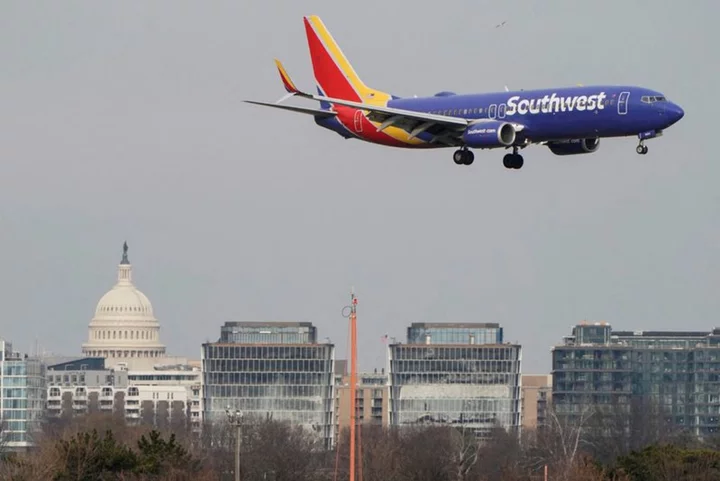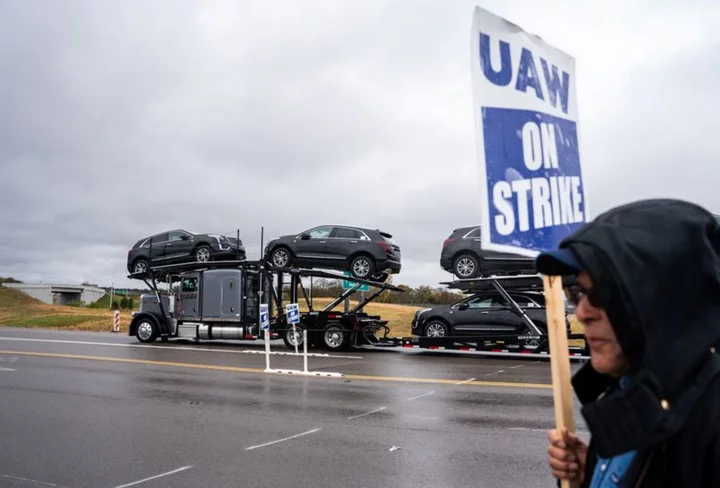Around 50% of major global companies will need less real estate in the next three years, with American cities — led by San Francisco — most exposed to empty offices, new research has found.
Half of firms with more than 50,000 employees plan to prune office space, with most anticipating a reduction of between 10% and 20%, according to a survey of 347 companies around the world by Knight Frank, a UK-based real estate firm.
The survey, released Tuesday, highlights changes underway in the commercial real estate market, which is under strain from waning demand for office space following a rise in homeworking after the pandemic, as well as from falling property values and rising interest rates.
There are fears that a rise in delinquencies as a result of the downturn could cause significant losses at banks, which finance many commercial real estate deals.
Separate research on offices published last week called out San Francisco as an "extreme example" of a city suffering from a rapid decline in occupancy rates.
The Knight Frank survey paints a mixed picture. While large multinationals are reducing office space, 55% of all surveyed companies expect to "increase or greatly increase" their footprints over the next three years, with growth led by smaller firms of up to 10,000 employees, Knight Frank said.
Of the 347 companies polled, 65 had more than 50,000 employees, 71 had 10,000-50,000 employees and 211 fewer than 10,000 employees.
"There are examples where companies are losing space... but equally there are a lot of organizations, particularly mid-cap companies, that are actually expanding their global footprint," Lee Elliott, global head of occupier research at Knight Frank, told CNN.
Companies were in the early stages of re-evaluating their real estate needs in the wake of the pandemic, and change wouldn't happen overnight, Elliott said.
"We're going to see a three- to six-year shift in office occupancy, not a three- to six-month shift," he added.
Firms were also weighing up factors such as whether their offices were suited to flexible working or whether they met energy efficiency standards, as well as what new technology meant for the size of their workforces.
"Office stock in major markets around the world will reduce because some of the offices of a lower quality just won't come back into use," Elliott said.
The survey, the first Knight Frank has conducted since the pandemic, found that 56% of companies had opted for a hybrid work policy, where employees spend some days each week in the office.
Almost a third, or 31%, require staff to come into the office most or all of the time, while just 12% of firms plan to implement a fully remote work policy.
San Francisco offices empty out
American cities could be left most exposed to changes in the office market, because of a proliferation of older, less appealing office blocks, according to Elliott.
Office space in the United States was also much more generous per person than in Europe and Asia, he said.
The research published last week by another British real estate firm, Savills, found that US cities will have the most surplus office space in the next decade, with San Francisco, New York and Los Angeles topping the global list, followed by Chicago, Houston and Washington DC.
London, Berlin, Madrid and Hong Kong were also forecast to have a large amount of excess office space.
Savills singled out San Francisco as "the most extreme example" of shifts underway in the office market.
Before the pandemic, the Californian city was one of the hardest places in the United States to find office space, with a vacancy rate of only 9.5%. Now, 30% of its office space is either vacant or due to return to the market in the next year — a 30-year high.
Savills identified a "broad East-West divide" with demand for office space in Asia-Pacific supported by limited supply, younger populations, expanding service economies and cultural factors, in contrast to the downturn in America. European cities sat "in the middle of the pack," with supply and demand dynamics "roughly in balance."
"This isn't about offices just becoming empty due to some cities seeing lower return to work levels post-pandemic," said Kelcie Sellers, a Savills research associate. "It's about how long-term economic, demographic and development trends interact with working patterns."









